Have you ever known a cat that was once sweet, and then as if out of nowhere, turned into a cat that you were concerned for due to aggressive behavior? Like humans, there are many cats out there who deal with aggression. Aggression in cats can happen for a number of reasons. There are also different classifications for how aggression in cats is labeled. Here we will talk in detail about signs your cat is dealing with aggression and try to offer you some ways to help them out.
First off, what is aggression in cats? Aggression is defined as hostile or violent behavior intended to dominate or intimidate another individual. This behavioral issue can happen for a number of reasons, and it can be equally upsetting for both the cat and the humans that love them dearly.
Here Are The Trigger Signs of Aggression in Cats
Lashing Out
If your once sweet and kind kitty suddenly reacts by way of aggressive behavior, such as swatting, clawing, biting and scratching, this is a telltale sign of aggression. Jackson Galaxy sheds light on this common cat behavior issue on his website:
With cat-to-human aggression, the roots almost always lie with the person. Cats who, as kittens, were played with or handled roughly by one or more people, and people who don’t understand cat behavior and unwittingly encourage aggressive behavior, are most often to blame.
If your cat feels threatened, they can react violently in self-defense. Your cat is a predatory animal and their “fight or flight” defense will kick into overdrive should they feel triggered/scared/threatened. Asses the situation and its surroundings, and above all, respect your cat’s space should you see the following signs start to take flight.

Drastic Changes In Body Language
As a cat lover, we understand the importance of interpreting our cat’s body language. A happy cat will be easy to read: tail up, ears perked up, slinking around, rubbing against their favorite human with delight.
But cats that show the following body language cues are a clear indication of aggressive behavior:
- Your cat is in a crouched position, as if they are on the verge of attack
- Ears will appear flattened down against their head
- The tail is low and straight, pointed downward
- Their eyes are wide and black, with dilated pupils that are clearly visible
- Your cat is making low, grumbling sounds (cat thunder, watch out for the lightning!) as if they are prepared to strike — hissing is often made as well immediately after (cat lightning!)
It’s important as their owner to give your cat space and practice patience.
If there is something that is triggering this issue and you have the power to resolve it, it’s imperative that you do it as soon as possible to not stress them out further.

As Jackson states on his site: “The trick is to STOP before the cat feels it necessary to take the next step. Never try to restrain the cat!”
There are also some signs that your cat is slowly becoming more aggressive. According to Healthy Pets with Dr. Karen Becker, an owner may notice the following in their cat as their aggression issues begin to take form:
- Fearful behavior
- Tail thrashing
- Excessive facial bunting
- Redirection of defensive behavior toward the owner
- Urinating or defecating outside the litterbox
The Types of Aggression in Cats
Cats can become aggressive for a number of reasons. Here we’ll break down each of them for you so that you can better understand the root of the cause for aggression in cats.
Fear-Induced Aggression
This type of aggression is seen in cats when they encounter unfamiliar stimuli. This can be a new pet, an unfamiliar sound, or a strange person they do not recognize that has entered their home.
According to Cornell University’s Veterinary College of Medicine:
Cats demonstrating fear aggression may flatten their ears against their heads, hiss, bare their teeth, or crouch low to the ground with their tail tucked under their body, and their fur may stand on end.
Many cat owners notice this sort of behavior when taking their cat to the vet’s office, but if your cat is suddenly behaving this way in your home this is certainly cause for concern.

Pet-Induced Aggression
As many of us cat owners know, you must practice precaution (not to mention, quick reflexes!) at times when petting cats. If you are petting your cat and notice that they are quick to react when you pet certain areas of their body–the belly and the base of the tail are two good examples–you are likely dealing with pet-induced aggression. This form of aggression comes as a result of over-stimulation, and your cat will respond in a way that might leave you with a few scratch and bite marks.
Play Aggression
Has there ever been a time when you’re playing with a cat and they suddenly sink their teeth into you out of nowhere? Well, then you’ve experienced play-aggression! Rough play is common and natural among kittens and young cats less than two years of age. As your cat ages, you should see these rough–and often painful–play-aggressive behaviors subside. Cats that are about to engage in play aggression will often thrash their tails back and forth; have their ears pinned to the tip of their head, along with dilated pupils.
Want to stop this play aggression behavior in your cat? Then you must redirect them when they display this behavior and do not encourage it in any way. Cats usually learn their limits of how they should behave during play from their littermates, but for some cats that never experienced the “hey, back off” from another cat, this might be a lesson that they must depend on from you.
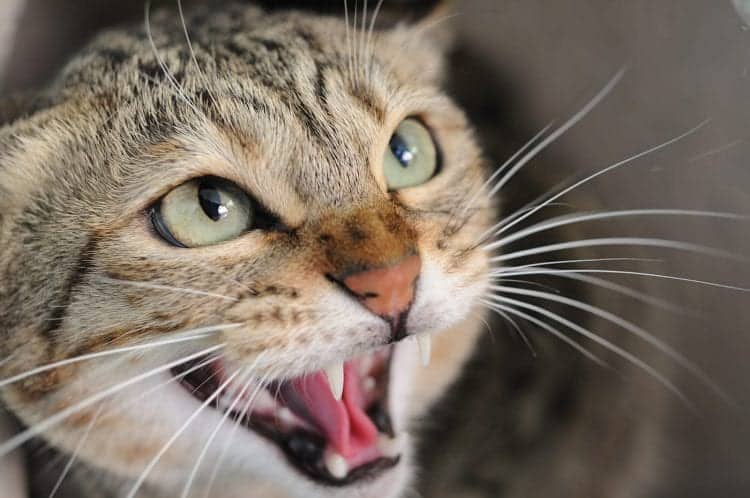
Redirected Aggression
Unfortunately, this type of aggression is all too common in cats–and it can also be the most dangerous. Basically your cat is redirecting their fears and frustration right back onto the first target they see: which is typically you or another pet in the home.
ASPCA explains exactly how redirected aggression occurs…
Redirected aggression occurs when a cat is aggressively aroused and agitated by an animal or person he can’t get at (because there’s a window between them, for example). Unable to get to the trigger of his agitation, he turns and lashes out at someone—person, dog or cat—who is nearby or who approaches him.
Other forms of aggression in cats include: territorial aggression, pain-induced aggression, status-induced aggression, territorial aggression, inter-cat aggression, and maternal aggression.
How To Help Your Cat Deal With Their Aggression
Above all, early intervention is key for success when looking to alleviate your cat of their aggressive behavior. Once you’ve established which form of aggression your cat is experiencing, the better your chances are of helping them to be happy once more. Understanding the root of the issue is imperative. It’s crucial that your suddenly aggressive cat be seen for a thorough examination with their health provider as medical issues in cats can sometimes lead to aggression.
Once you’ve decided that this is cat aggression you’re dealing with, your very first step towards getting your cat the help that they need is to speak with your cat’s veterinarian. Often times, they have helpful resources and/or know pet professionals with experience who can help you and your cat. If medical issues have been ruled out and you’re left wondering how to help your cat, a cat behaviorist may be just the person who can help.

If you’ve read this and determined that your cat is showing signs of aggression, remember that you can do something about it. They just need you, their human, to help show them the way to make things right again!
REMEMBER: ADOPT, DON’T SHOP; FOSTERING SAVES LIVES & SPAY AND NEUTER!
Related Story: Why Is My Cat Hissing At Me?
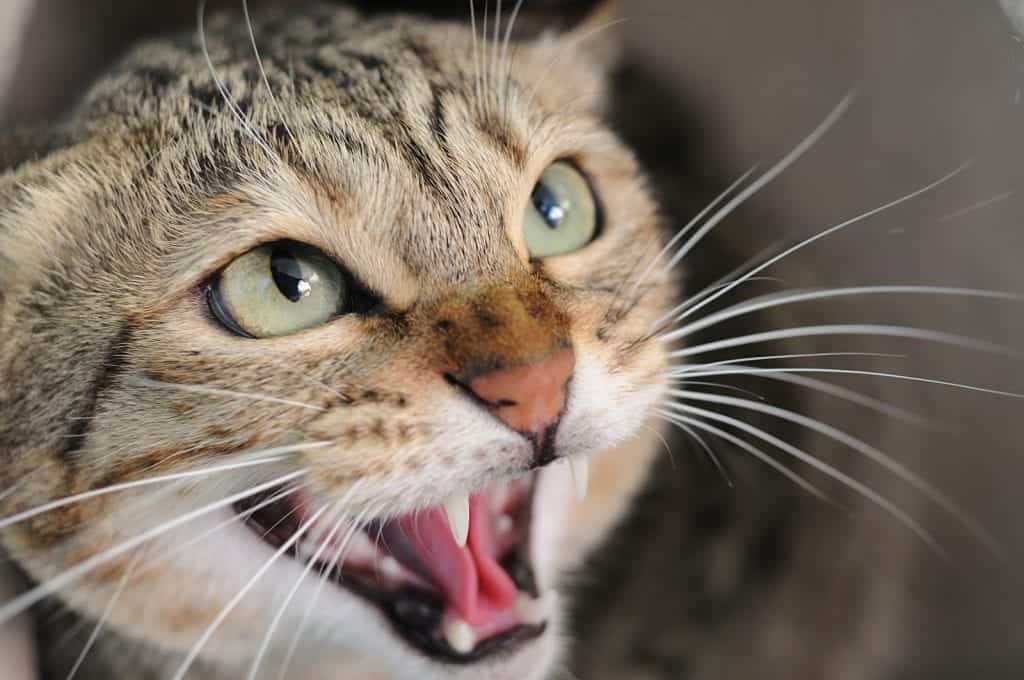
Related Story: (With Updates!) Five Feral Cats Will Have A Happy Holiday; Whether They’re On The Naughty or Nice List! =)



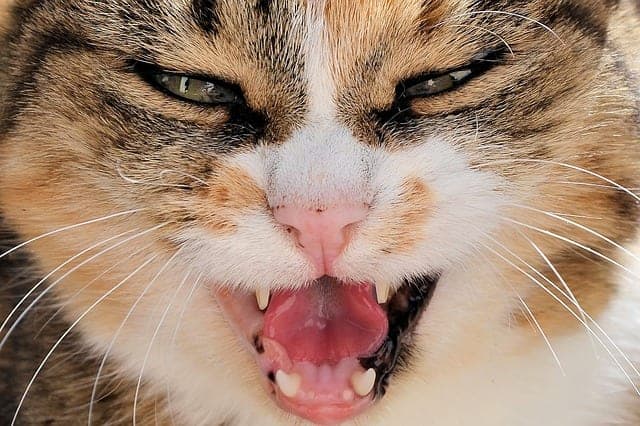





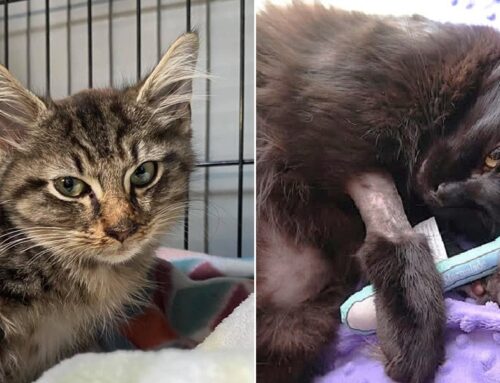
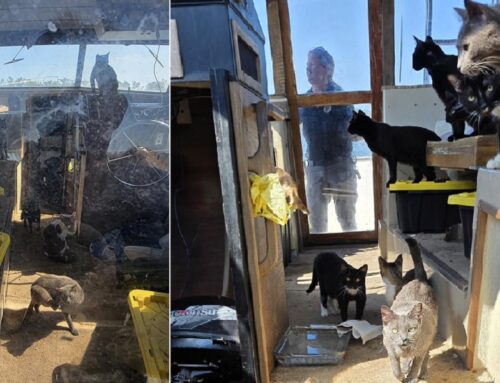


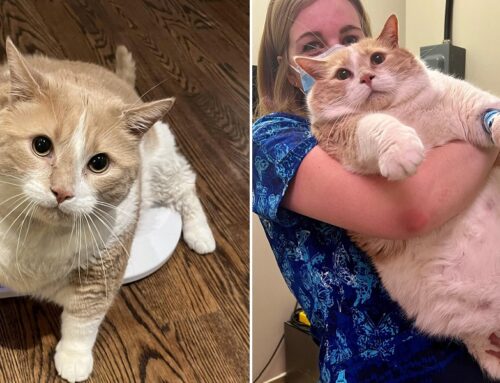
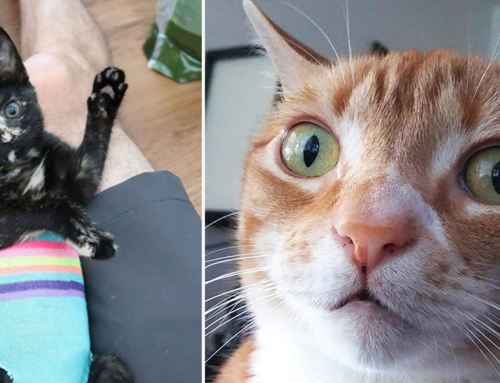

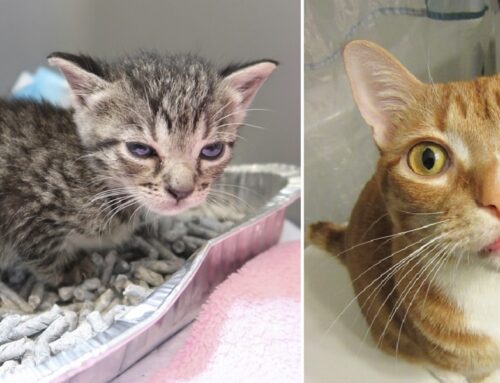

I’m not really sure what type of aggression my cat is showing. He directs it to one of my other cats. I have four cats and one he will play with and does fine. Another one he will hiss, growl and occasionally chase. The one he directs his aggression towards the most he watches and pounces or chases and also swats at him as he passes. The cat whom the aggression is directed at is cautious and looks and waits for an attack. I believe it may be inter-cat aggression or possibly territorial perhaps another type. The one who is attacked has had trouble with urinary crystals and sometimes sprays or stands to urinate and I thought that might be the trouble. I’m just not sure what to do.
I have 4 cats too, in an apartment, all recue. It’s not normal for so many cats to live together. I do have one that picks on the others and only one has problems with this as she’s smaller. I separate the aggressive cat when she does this, or pick up the cat that has problems. The ones that are fighting or moody are females, they both want to be the Queen. I told them the only Queen around here is me.